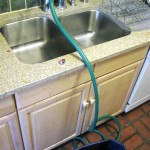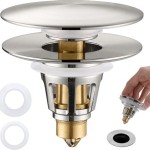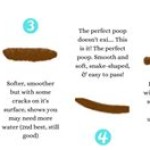Replacing a P-Trap Under Your Kitchen Sink: A Comprehensive Guide
The P-trap is an essential component of any kitchen sink plumbing system. Its curved design serves a vital purpose: to trap debris and create a water seal that prevents sewer gases from entering the home. Over time, P-traps can become clogged, corroded, or damaged, necessitating replacement. This article provides a detailed, step-by-step guide on how to replace a P-trap under a kitchen sink, covering the necessary tools, materials, and procedures.
Before beginning the replacement process, it is crucial to understand the purpose and function of the P-trap. As mentioned, the water held within its bend acts as a barrier against noxious sewer gases, which can pose health risks. Furthermore, the P-trap often catches small objects that accidentally fall down the drain, preventing them from causing blockages further down the plumbing line. Therefore, a properly functioning P-trap is crucial for maintaining a sanitary and odor-free kitchen environment.
Identifying the need for a P-trap replacement is the first step in this process. Common indicators include persistent drain clogs, foul odors emanating from the sink, visible leaks around the trap, and physical damage such as cracks or corrosion. If any of these issues are present, replacing the P-trap is likely the most effective solution.
Gathering the Necessary Tools and Materials
Successful P-trap replacement requires the right tools and materials. This section outlines the necessary equipment for the job.
Firstly, a new P-trap is essential. P-traps are typically made of PVC or metal (brass or chrome). PVC is a cost-effective and durable option, while metal traps offer enhanced aesthetics and resistance to certain chemicals. When selecting a replacement, ensure it matches the diameter of the existing drain pipes. Common sizes are 1 ½ inch and 1 ¼ inch. It's advisable to purchase a complete P-trap kit, which includes all the necessary fittings and washers.
Secondly, tools are needed to disassemble the old P-trap and install the new one. A pipe wrench or adjustable pliers are necessary for loosening and tightening slip nuts. A bucket is essential for catching any water that may be present in the P-trap. A screwdriver (typically Phillips head) may be required for removing any mounting brackets. Plumber's tape (also known as Teflon tape) is crucial for sealing threaded connections to prevent leaks. A utility knife can be helpful for cutting any excess pipe length. A rag or sponge is needed for cleaning the area around the sink drain.
Thirdly, safety equipment is important. Wearing gloves protects hands from grime and potential exposure to bacteria. Eye protection, such as safety glasses, prevents debris from entering the eyes. While not always necessary, a face mask can provide additional protection from dust and odors.
Step-by-Step Replacement Procedure
This section provides a detailed guide on how to safely and effectively replace a P-trap under a kitchen sink.
The first step is preparation. Clear the area under the sink, removing any items that might obstruct access to the P-trap. Place the bucket directly beneath the existing P-trap to catch any residual water. This will minimize mess and prevent water damage.
Secondly, disassemble the old P-trap. Loosen the slip nuts that connect the P-trap to the drainpipe from the sink and the tailpiece (the pipe that extends down from the sink drain). Use the pipe wrench or adjustable pliers for this. It's important to turn the nuts counterclockwise to loosen them. As the nuts loosen, water will likely begin to drain into the bucket. Carefully remove the old P-trap once all connections are loosened.
Thirdly, inspect and clean the drain pipes. Once the old P-trap is removed, inspect the drainpipe coming from the sink (the tailpiece) and the drainpipe leading into the wall for any signs of corrosion, damage, or blockage. Clean these pipes with a rag or sponge to remove any debris or buildup. If the tailpiece is damaged, it may need to be replaced as well.
Fourthly, assemble the new P-trap. Following the manufacturer's instructions for the new P-trap kit, assemble the components. Ensure that all washers are correctly positioned to create a watertight seal. Apply plumber's tape to any threaded connections before tightening the slip nuts. Wrap the tape clockwise around the threads, overlapping each layer slightly.
Fifthly, connect the new P-trap. Align the new P-trap with the drainpipe from the sink and the drainpipe leading into the wall. Hand-tighten the slip nuts to ensure a proper connection. Once hand-tight, use the pipe wrench or adjustable pliers to tighten the nuts further, but be careful not to overtighten them, as this could damage the plastic or metal.
Sixthly, test for leaks. After installing the new P-trap, run water into the sink and check for any leaks around the connections. Carefully inspect the slip nuts and the P-trap itself. If leaks are present, tighten the slip nuts slightly. If the leaks persist, disassemble the connection, inspect the washers and plumber's tape, and reassemble. Ensure the washers are seated properly and the plumber's tape is applied correctly.
Troubleshooting Common Issues
While replacing a P-trap is typically a straightforward process, some common issues may arise. This section offers solutions to these problems.
Firstly, leaking connections can often be attributed to improperly seated washers or insufficient plumber's tape. Ensure that the washers are correctly positioned within the slip nut and that they are not damaged. Remove the connection, reapply plumber's tape, and reassemble, ensuring that the nut is adequately tightened (but not overtightened).
Secondly, if the new P-trap doesn't align properly with the existing drain pipes, it may be necessary to adjust the length of the pipes. This can be achieved by cutting the tailpiece or the drainpipe leading into the wall using a pipe cutter or utility knife. However, exercise caution and only remove the necessary amount of material. It is generally better to cut a little less and then adjust as needed.
Thirdly, if the drain is still clogged after replacing the P-trap, the blockage may be located further down the drain line. In this case, consider using a drain snake (also known as an auger) to remove the clog. Insert the snake into the drainpipe and rotate it to break up the blockage. Alternatively, a chemical drain cleaner can be used, but it is essential to follow the manufacturer's instructions carefully and wear appropriate safety gear.
Fourthly, if the new P-trap makes excessive noise, such as gurgling, it may indicate improper venting. This issue is more complex and may require professional plumbing assistance. Proper venting ensures that air can enter the drain system, preventing a vacuum that can cause noise and slow drainage.
Finally, if the replacement P-trap is a different material than the existing pipes (e.g., PVC to metal), ensure that the connection is compatible and properly sealed. Adapters may be required to make a secure and leak-proof connection between different materials. Using the correct type of plumber's tape or pipe joint compound is also important.
By following these steps and addressing potential issues, homeowners can successfully replace a P-trap under the kitchen sink, ensuring a properly functioning and sanitary plumbing system.

How To Install A Plastic Kitchen P Trap Youtube
How To Install A Kitchen Sink Drain

How To Replace A Sink Drain P Trap Full Guide Fixed Today Plumbing

How To Install A P Trap Oatey

How To Fix Or Replace A Leaky Sink Trap Hometips

How To Install P Trap And Bathroom Sink Drain Piping Easy Installation For Beginners Youtube

Plumbing Kitchen Sink P Trap Installation Advice Home Improvement Stack Exchange

How To Replace A Sink Trap The Home

Replace A Trap And Add Cleanout Fine Homebuilding

How To Fix Kitchen Sink P Trap Leaking Pipe Connection Nut







